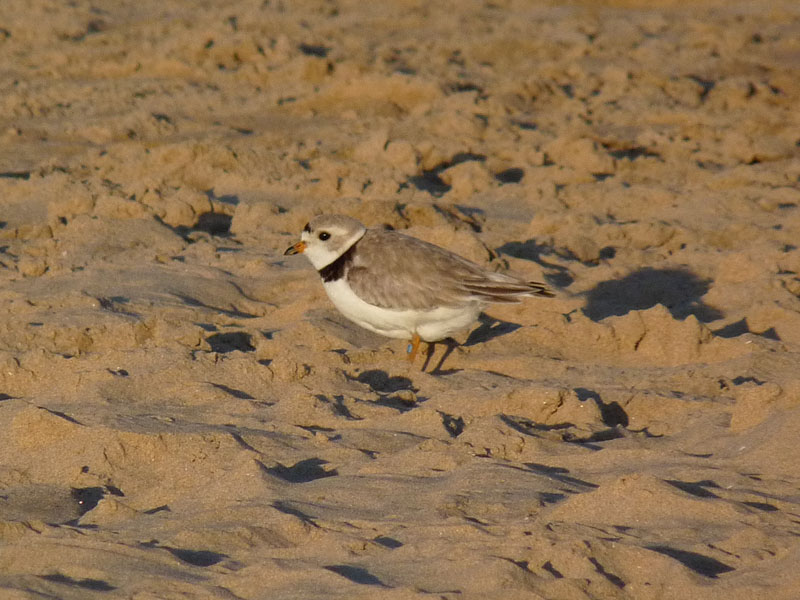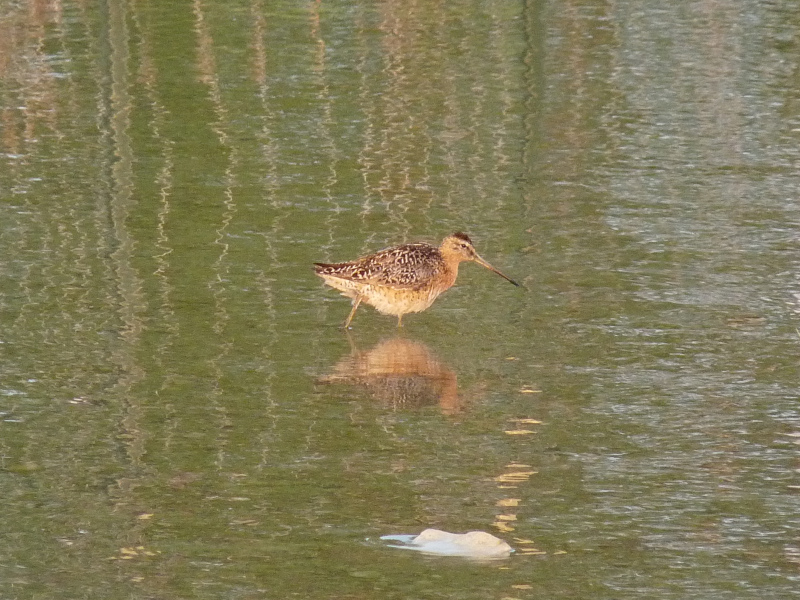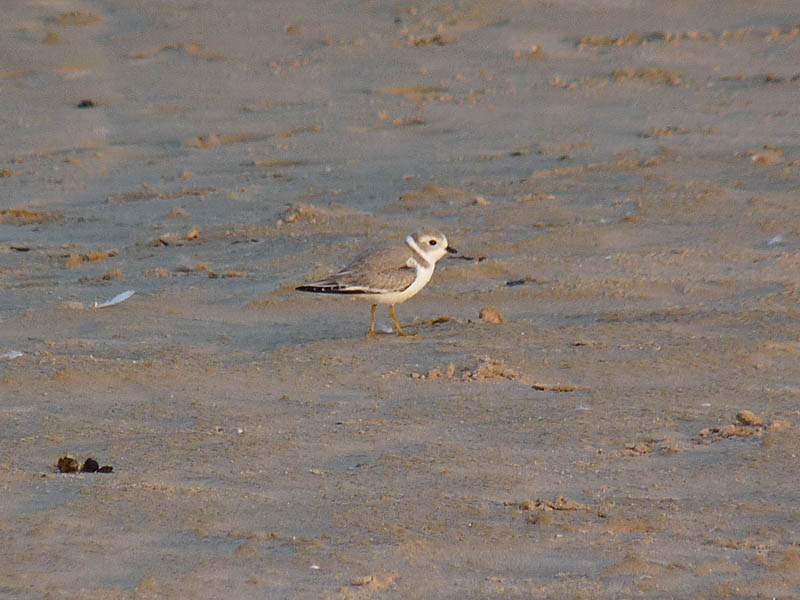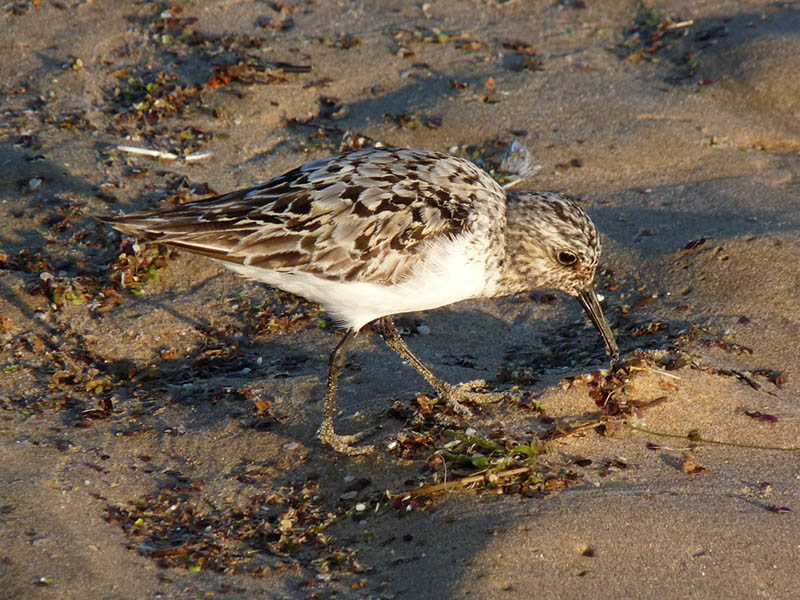Monty died unexpectedly on May 13, 2022, thus ending the saga of Chicago’s first nesting Piping Plovers in over 50 years. The Dunes habitat is protected and intact, so perhaps another pair of Piping Plovers will find their way to Montrose and try to nest.
Tag Archives: Piping Plover
Montrose Piping Plovers – Are They Worth It?
For the third consecutive year, Monty and Rose, our famous Piping Plover couple, nested and raised a family. This is an enormous conservation success story by any measure, the first time Piping Plovers have nested in Chicago in over 50 years.
The wide sandy beach at Montrose is near perfect Piping Plover habitat, but Montrose is far from ideal as a nesting location. Montrose is one of the most popular beaches in Chicago; all that human activity makes life difficult for any bird that nests on the open beach, like Piping Plovers do. The human animals aren’t the only challenge the plovers face. Montrose is also home to several mammalian predators, including Striped Skunks and Racoons, and they aren’t above preying on Piping Plover eggs. In fact, in 2021, a skunk ate some of the eggs from Monty and Rose’s first clutch. As if the mammalian predators weren’t enough, Montrose also hosts Peregrine Falcons, Cooper’s Hawks, Great Blue Herons, and gulls, all capable of dispatching the plovers and their young. With all these threats it’s a miracle Monty and Rose are able to nest and raise a family. The hard truth is that without human involvement the chances of them nesting successfully are small. Part of the beach got fenced off to keep people out in case Monty and Rose decided to nest there in 2021. Like the beach, the Dunes got fenced off to keep people out when Monty and Rose chose to nest there. To protect the eggs form predators, a steel cage was placed over the nest. Even with a cage a determined skunk managed to slip through and pilfer the eggs, forcing Monty and Rose to start over. A new, larger cage prevented this from happening again. To deter avian predators, biologists stationed a trap baited with a live pigeon in the Dunes. On top of all this, a cadre of dedicated volunteers spent hundreds of hours monitoring the plovers.
So the question is, is all this effort worth it? Is all the inconvenience worth it? I led field trips to Montrose in the spring of 2021 and I would take my guests down to the beach and Dunes, where I talked about the nesting Piping Plovers and the efforts to protect them. On one trip a client remarked “All this for a couple little birds?” It’s a legitimate question to ask. I think the answer is a resounding yes. Monty and Rose became celebrities in Chicago, raising awareness of their struggle and the plight of Piping Plovers on the Great Lakes. Their story was mentioned in the news and it became impossible not to sympathize with them. Their story also raised awareness of Montrose and how important it is for wildlife, especially the fragile Dunes.
The story of Monty and Rose is a story of hope and struggle, of people from different backgrounds working together to give a pair of underdogs a fighting chance at raising their kids in a not always hospitable environment. We look forward to their return.
We Have Liftoff!
On August 10 I saw the two surviving juvenile Piping Plovers, Imani and Siewka, make sustained flights, first out over Lake Michigan north of the beach and back, and then over Lake Michigan east of the Point. One of the adults accompanied them on these sojourns. This is the first time I’ve seen them fly for any distance or length of time. Before they could fly, the young plovers were vulnerable to a variety of avian and mammal predators and competitors, including gulls, Cooper’s Hawks, Peregrine Falcons, Great Blue Herons, Raccoons, skunks, and aggressive parental Killdeer. Now they have at least a fighting chance against these threats and their chances for survival increase dramatically. Two of the siblings from the 2021 brood disappeared before fledging and were likely lost to predators.
2021 is the third year in a row Monty and Rose have raised young at Montrose to fledging, a monumental conservation success story by any measure.
Shorebirding, July 2021
We’ve been seeing migrant shorebirds at Montrose Beach almost daily since late June. Most have been Least Sandpipers, but we’ve also had Lesser Yellowlegs, Willet, and American Avocet. On July 14 I had a Short-billed Dowitcher, my first of the year. These are all expected early summer shorebirds.
Still More Summer Shorebirds
Another good morning for shorebirds at Montrose Beach, August 21. The Red Knot and Willet continue in the fluddle on the public beach. Also, an unbanded juvenile Piping Plover made a brief appearance early in the morning, and a Pectoral Sandpiper came in and was still there when I left. Link to my eBird checklist for the morning below.
For more information about shorebirds at Montrose, see the Shorebirds section of the What to See page.
eBird Checklist
August 21, 2020
Summer Shorebirds
Shorebirds have been moving south at Montrose since late June. This is typical. The first birds are invariably adult Least Sandpipers (adult shorebirds precede their offspring). It’s hard to believe they have enough time to breed before starting migration again. The earliest southbound migrants almost overlap in time with the last northbound spring migrants! Montrose Beach serves as a convenient stopover for feeding and resting. The public part of the beach is often flooded in summer and migrant shorebirds like to break there and fuel up before continuing their journey. Some of the more unusual birds we’ve seen this summer include Whimbrel, Red Knot, Western Sandpiper, and White-rumped Sandpiper. Montrose doesn’t get huge numbers of shorebirds but the ones we do get we usually see well.
Monty and Rose
Also on the shorebird front, our celebrity Piping Plovers Monty and Rose returned in 2020 and nested again. This year they set up in the Dunes among the thick beach grass, which made monitoring challenging. They successfully raised 3 young, and unlike last year’s brood, fish and wildlife officials banded all 3. The young were also given names — Hazel, Esperanza, and Nish. The family departed by mid-August.
For more information about shorebirds at Montrose, see the Shorebirds section on the What to See page.




